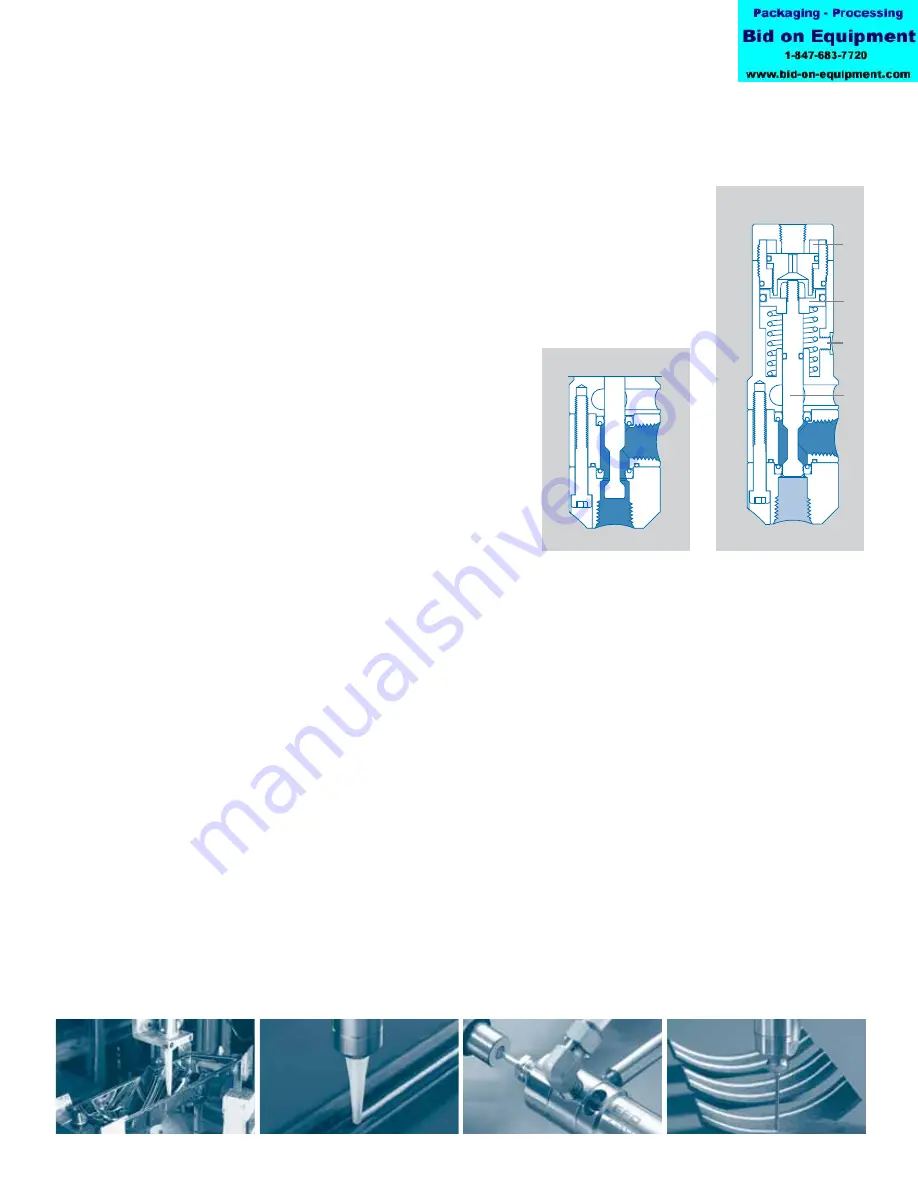
How the Valve Operates
open
closed
➃
➂
➁
➀
When air pressure at 70 psi (4.8 bar) is applied, the piston shifts the
spool
➀
to the open position, allowing fluid to flow. At the end of the
cycle, spring force on the piston
➁
shifts the spool to the closed
position, stopping fluid flow. During the closing action, the 736HPA
provides snuff-back of fluid for clean cutoff.
The stroke adjustment
➂
can be used to regulate snuff-back to an
amount appropriate for the fluid being dispensed. Stroke adjustment
can also be used to reduce fluid surge when the valve opens to ensure
consistent bead widths and dot profiles. The stroke is adjusted by
moving the stroke limit stop:
1. To access the stop, first remove the air input hose from the push-in
air coupling by pushing down on the release ring while pulling up
on the tubing.
2. Insert the 1/8” Allen wrench through the air coupling and engage
the stroke limit stop.
3. Adjust the stop toward or away from the piston to vary the stroke.
To decrease the amount of opening surge and closing snuff-back,
extend the limit stop by turning the wrench clockwise. To increase
the amount of surge and snuff-back, retract the limit stop by
turning the wrench counterclockwise.
Note: Adjusting the stroke does not affect the flow rate.
4. Install the air input hose by pushing the hose into the coupling.
Note: For striping applications, fluid surge can be reduced further by
lowering the valve operating air pressure down to, but not below,
40 psi (2.7 bar).
When dispensing very thick fluids at high cycle rates, the double-acting
feature ensures rapid closure. A double-actuating air input
➃
is provided
on the side of the air cylinder to allow double-acting operation using air
pressure to both open and close the valve.
The amount of fluid dispensed is determined by valve open-time, fluid
pressure, dispensing tip size and fluid viscosity.
www.efd-inc.com [email protected] USA 800-556-3484 44 (0) 1582 666334 Asia +86 (21) 5854 2345






















